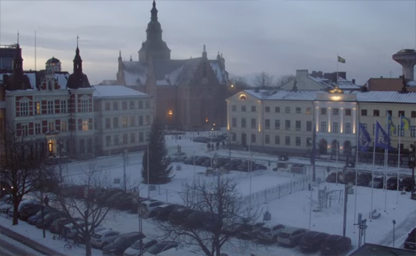
Stora Torg
Looks out onto the square Stora torg, the main square in the city of Kristianstad
Discover Sweden in a whole new light with our exclusive guide to streaming cams that capture the nation’s breathtaking beauty in real time. From the bustling streets of Stockholm to the tranquil vistas of the Swedish countryside, these live webcams provide an intimate look at the diverse landscapes and vibrant culture that define this Scandinavian gem.
Whether you're planning your next adventure, monitoring weather conditions, or simply enjoying a moment of serenity, streaming cams offer a dynamic window into Sweden’s urban centers, coastal views, dense forests, and snow-capped mountains. Experience the charm of quaint villages, the energy of modern cities, and the timeless beauty of nature—all from the comfort of your home. Embrace the opportunity to explore and reconnect with Sweden’s unique spirit as you journey through live, ever-changing scenes that celebrate both tradition and innovation.